Making Tamarind Paste at home is simple and better without any preservatives. Use it to make savory dishes, candies, paletas, margaritas, agua fresca and more! This recipe is also known Tamarind Concentrate or Tamarind Pulp and is made with only two ingredients!
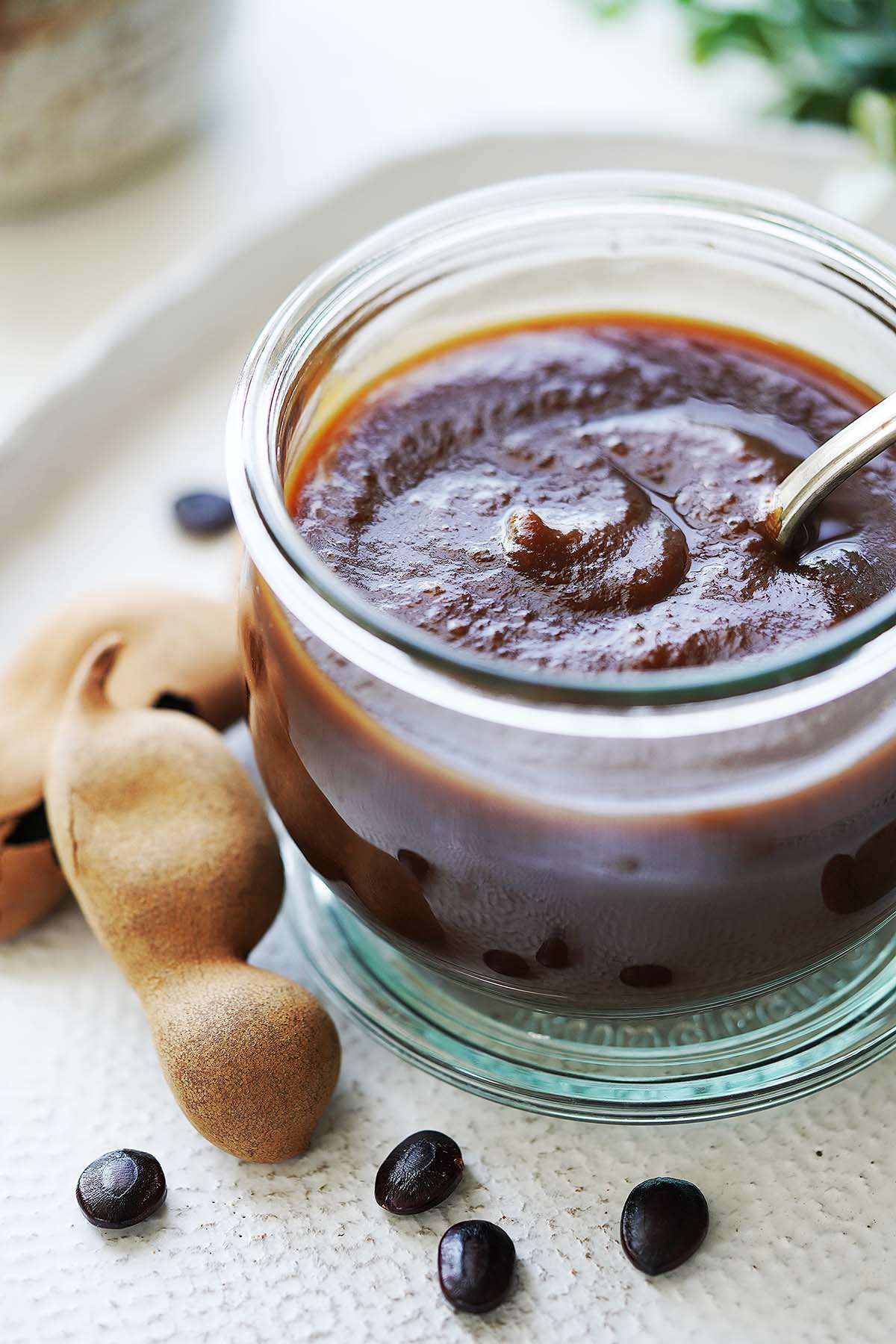
Tamarind is a tropical fruit grown in many countries in the Caribbean, India, Thailand, and Mexico. The pods have a sticky pulp inside which is removed from around the seeds.
It is a culinary staple in these parts of the world and it’s used as an additive flavor in cooking. The fruit is very acidic which adds a tart, sweet, or sour taste to dishes and drinks.
In Mexico we use Tamarindo to make Agua Fresca, Paletas (popsicles), raspados (slushies), Margaritas, Candies, Chamoy, savory dishes prepared in a sauce and many more!
Why this recipe works
- You have full control over what goes into it! No sneaky preservatives or artificial flavors here.
- You can tweak the consistency and flavor to suit your taste and the recipes you plan to whip up. Make it as thick or runny as you want.
- You’ll be able to adjust the sweetness and tartness to your liking. Add white or brown sugar if you want it a little sweet!
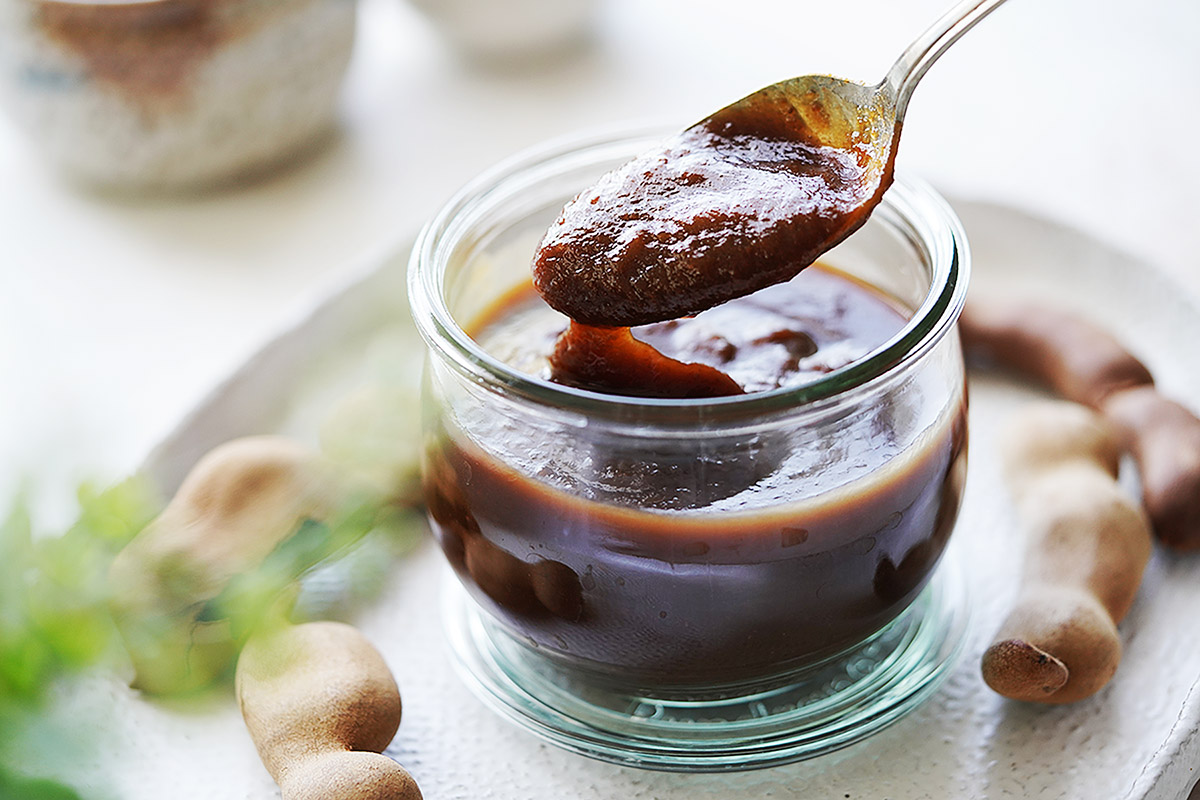
Ingredients
- Fresh tamarind pods
- water
- White or brown sugar if you want it sweet. Totally optional!
How to select the best tamarinds
When buying tamarindos in pods, select the ones that have the entire shells. Some of them are open already and you can see inside if the pulp looks dry or still has the dark brown pulp. These are the ones you need to buy!
You can find them in your local grocery store or any Asian or Mexican store.
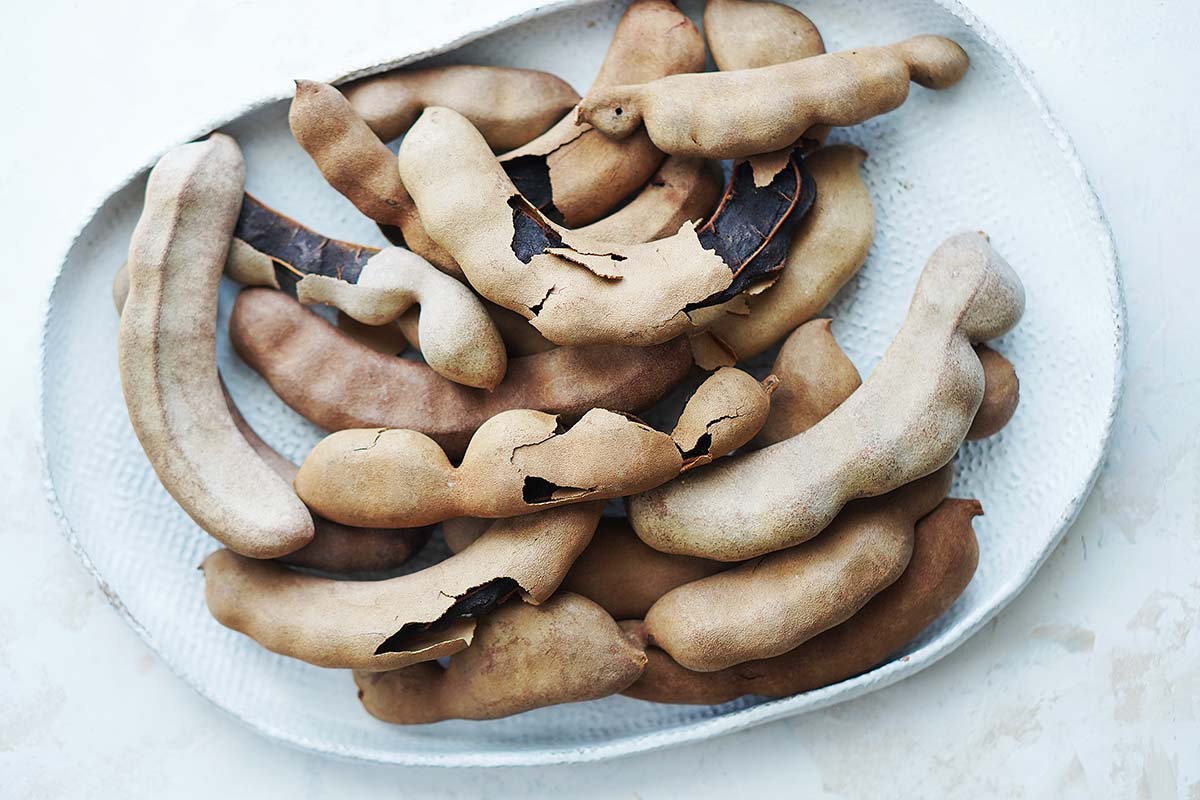

How To Make Tamarind Paste
This is a visual overview of the steps to make this recipe. See the detailed list of ingredients & instructions in the recipe card below.

- Remove the skin from tamarinds along with any big strings attached to the fruit.
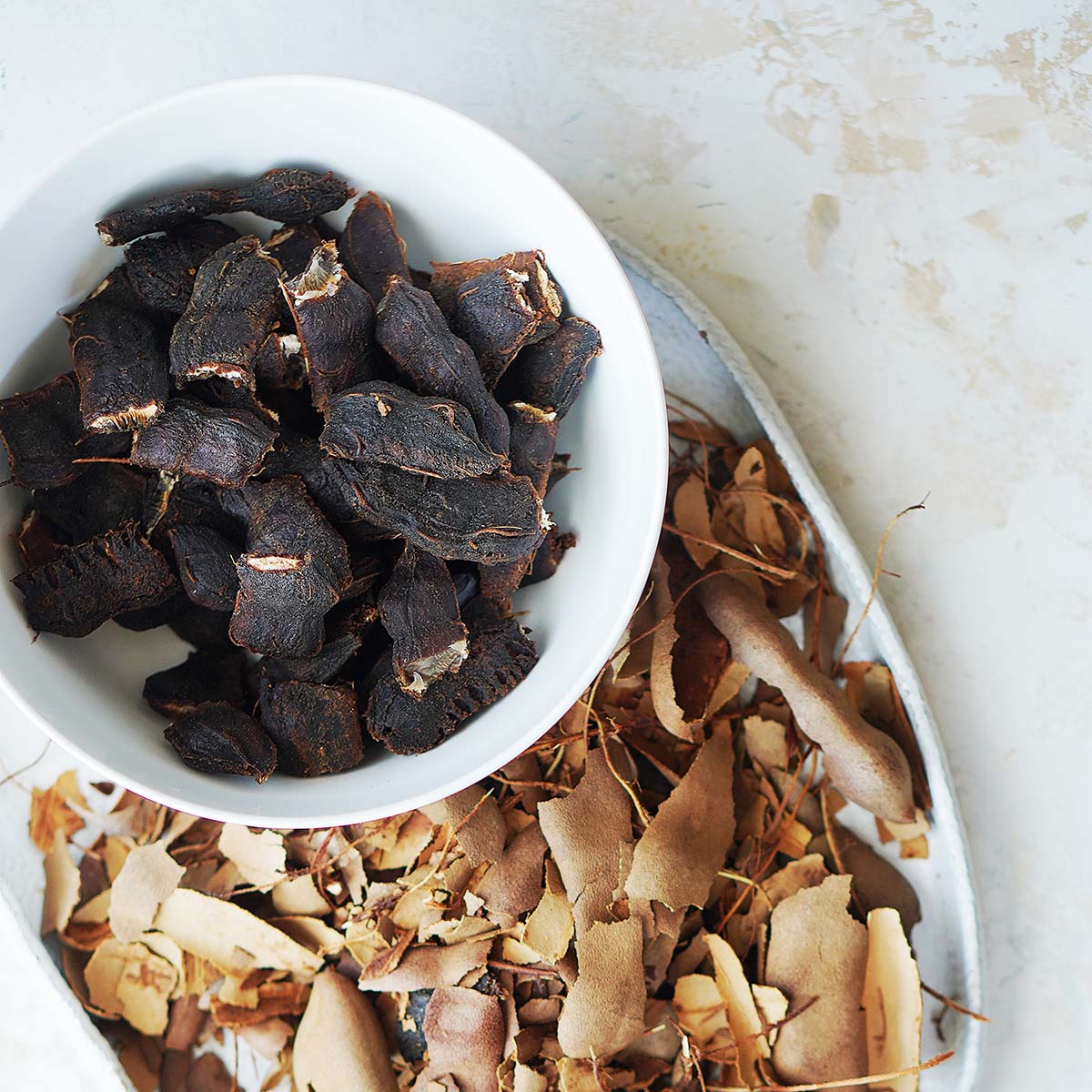
- Cut each tamarind into several pieces with your hands.
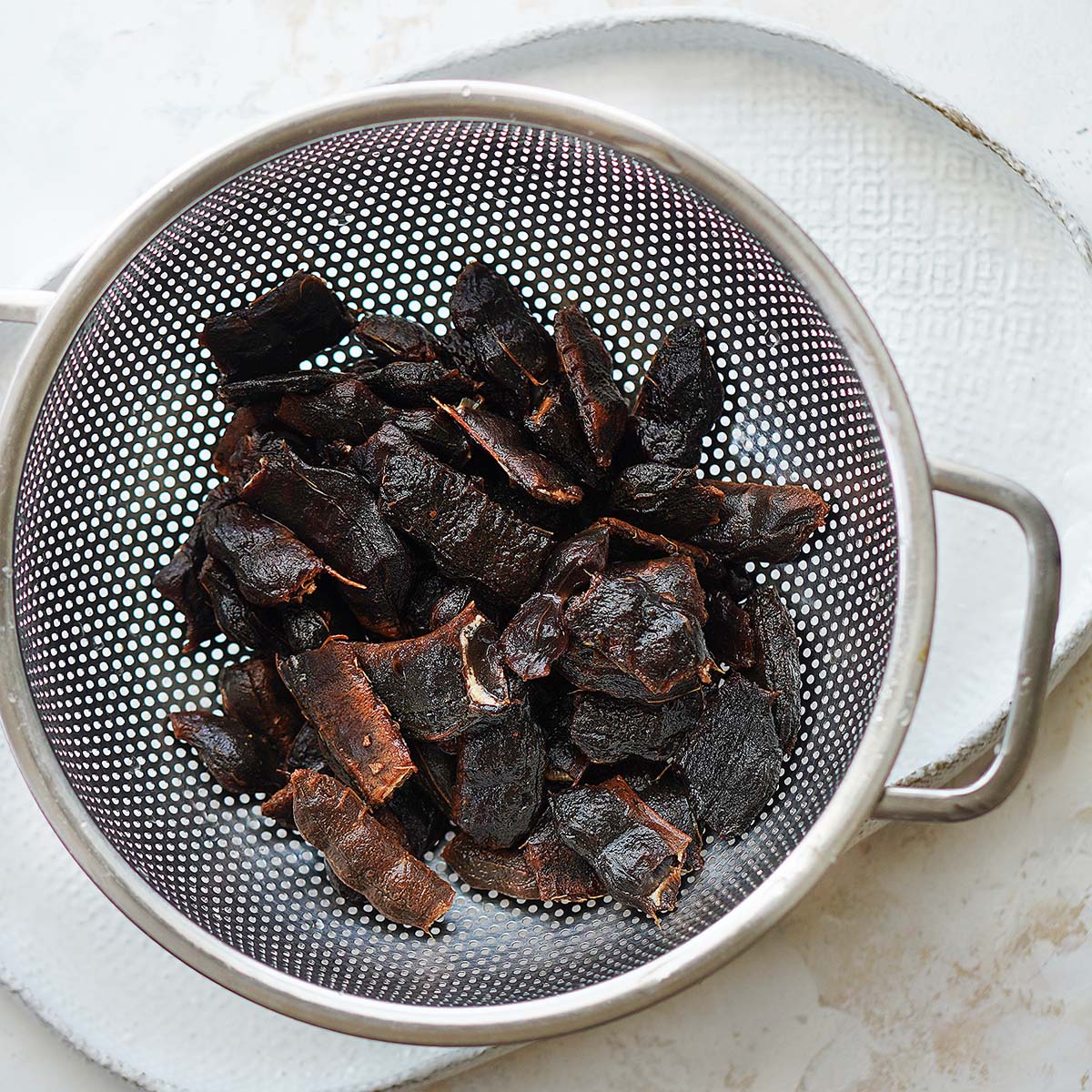
- Rinse quickly on a colander with cold water to remove any dusty spots.
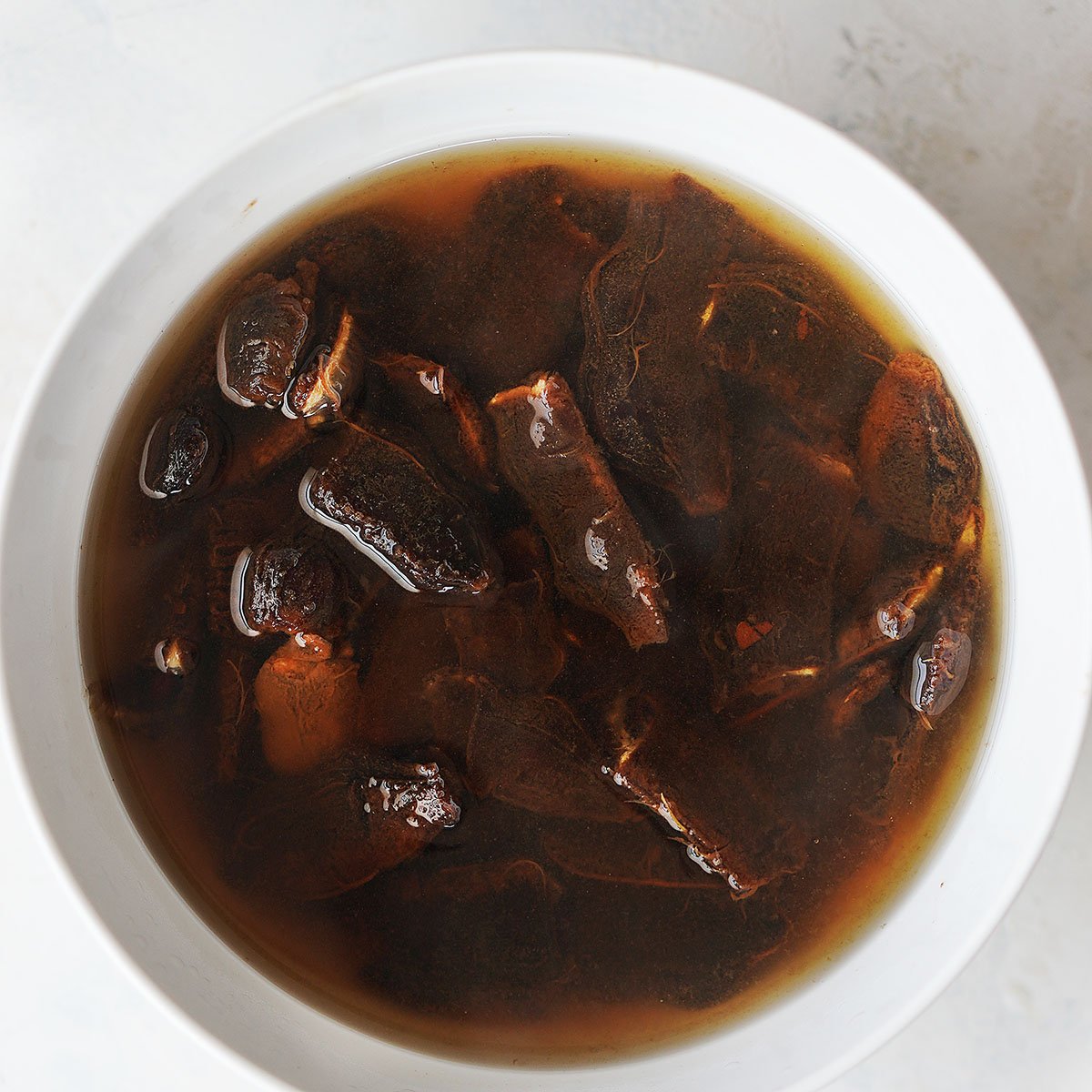
- Place in a medium bowl and add 2 cups of hot water. Cover with a lid or a plate and let it rest for 10 minutes. Soaking in water will soften up the pulp to remove the strings and seeds.
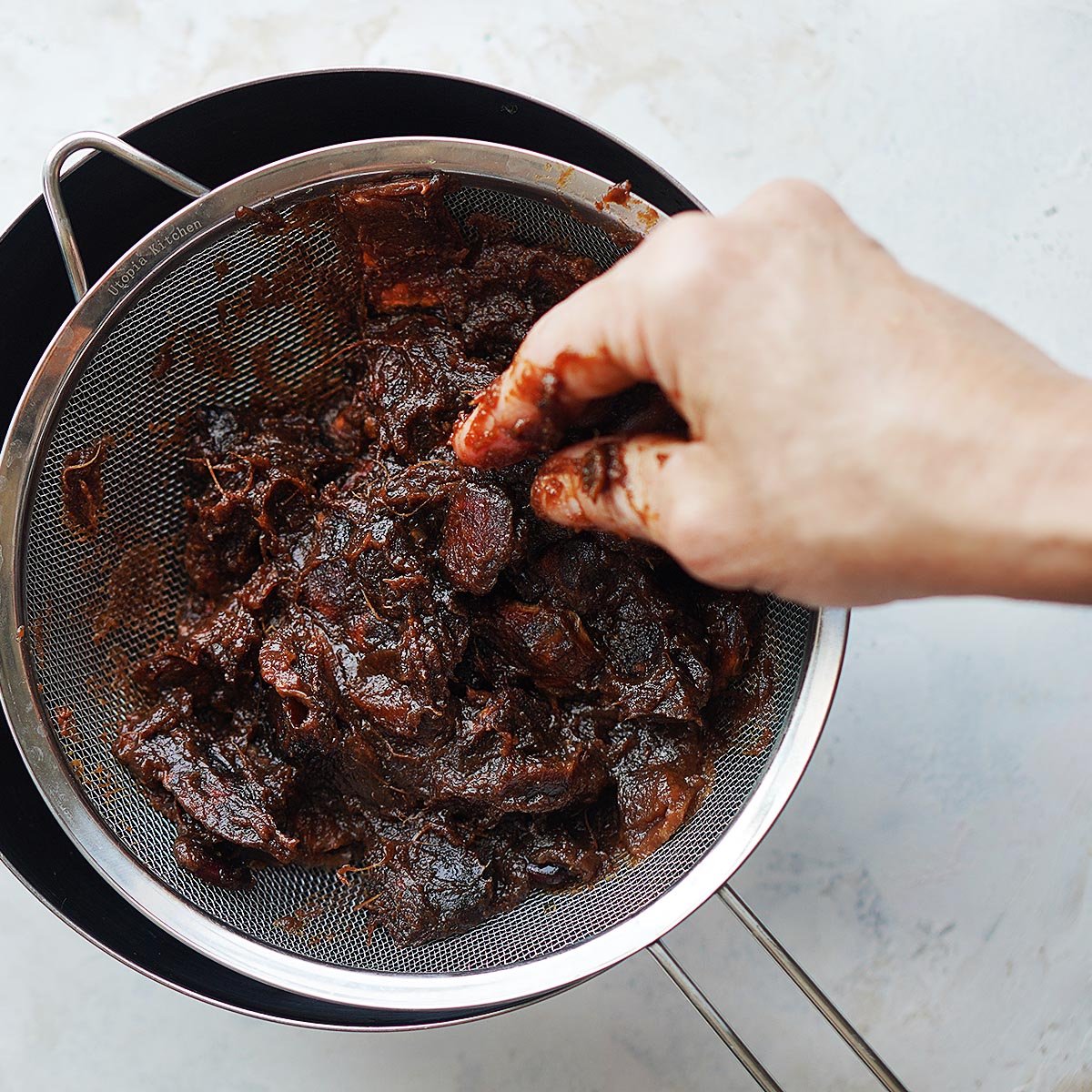
- In another medium bowl, place a strainer and add the tamarinds with the warm water. Mash it with a spatula or your clean hands to squeeze the juice/pulp out of the seeds and the hard fiber. Push down the pulp thru the strainer to extract all of the tamarind pulp.
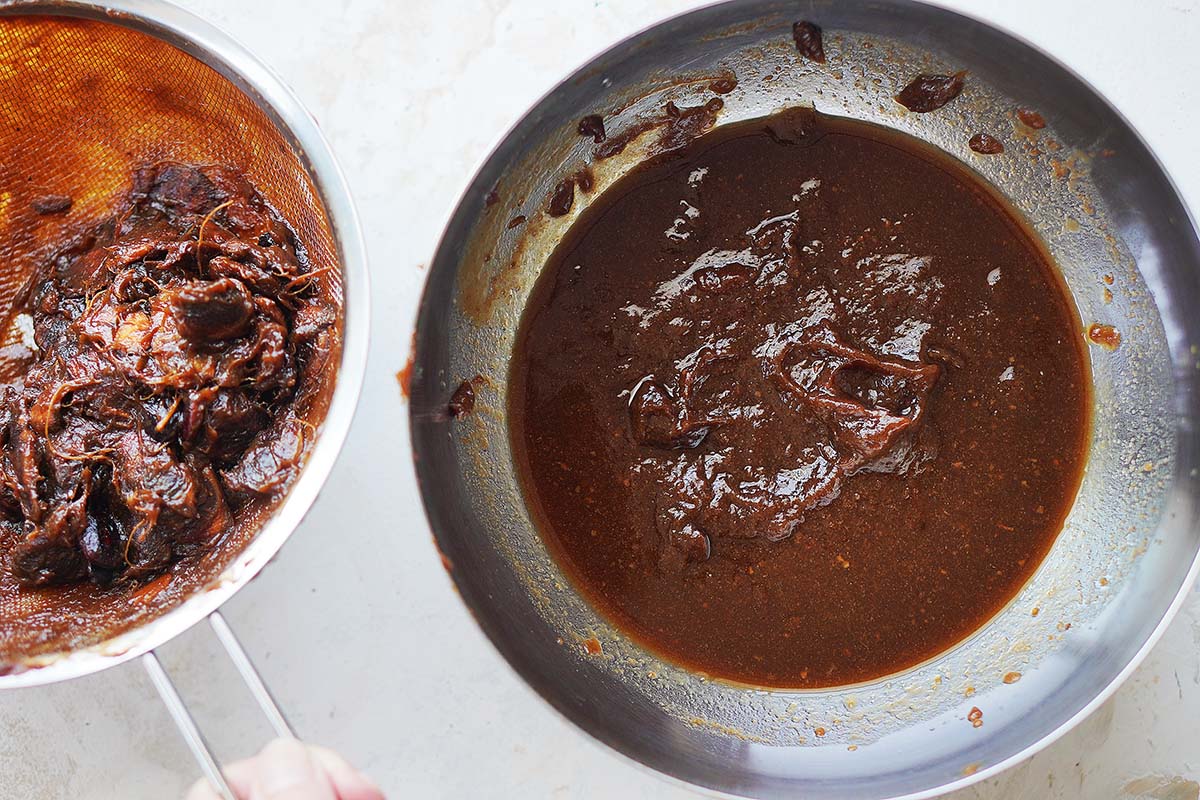
- Add a little more water at the time (no more than 1 cup water) to strain any remaining pulp. Scrape off any pulp attached to the outside/bottom of the strainer.
- Discard the tamarind fiber and seeds.
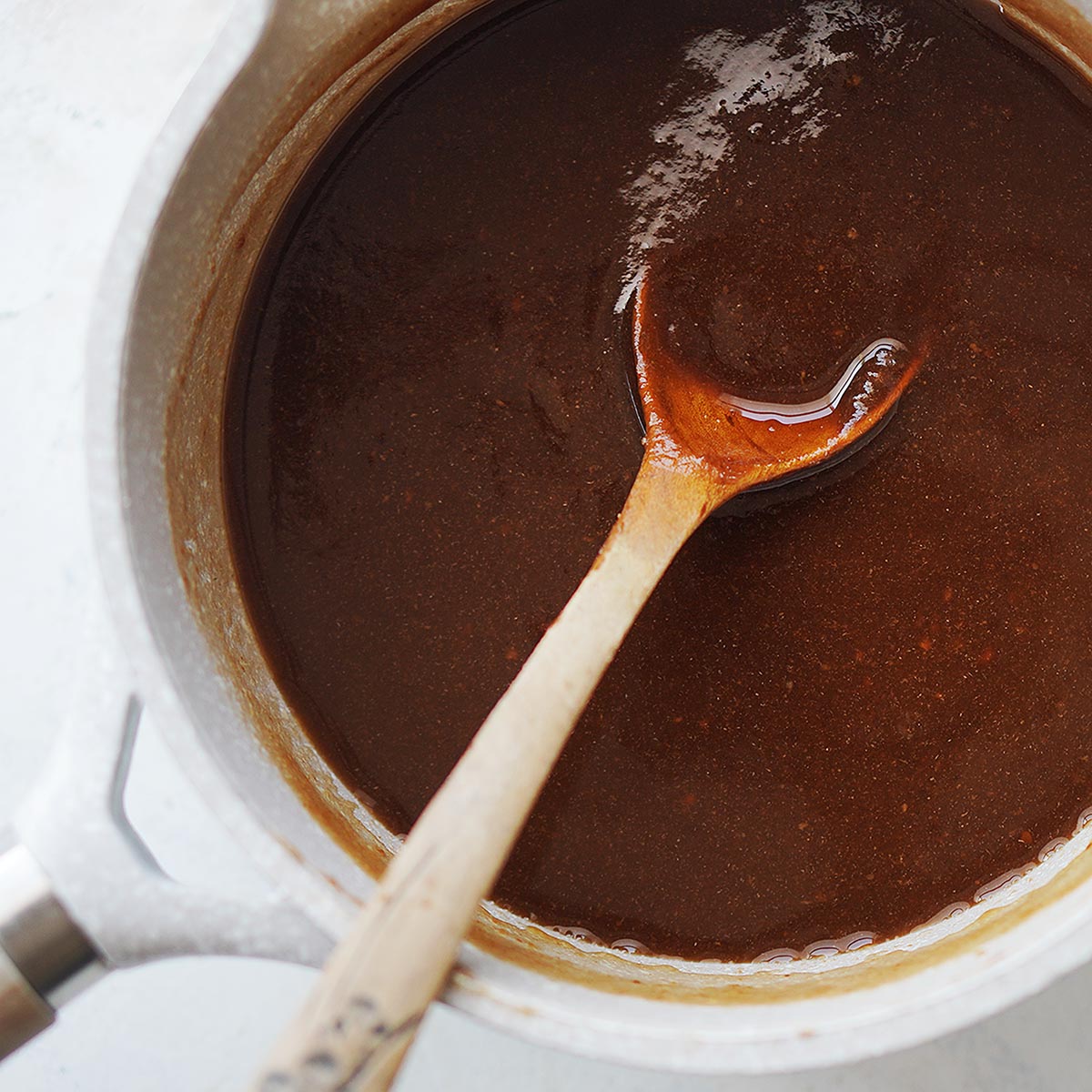
- In a medium saucepan, add the tamarind pulp from the bowl.
- Bring to a soft boil and then lower heat to medium low. Cook for 5 minutes.
- Remove from heat and let it cool down completely.
Uses For Tamarind
Tamarind is very popular in Mexico and is used in more ways than I can count. It’s also very popular in other Latin American, the Caribbean, Thailand & Indian recipes.
- Drinks & Cocktails
- Candies
- Desserts
- Savory Dishes
- Salad Dressings
- Sauces
A popular Thai recipe that uses tamarind is Pad Thai and also happens to be my favorite!
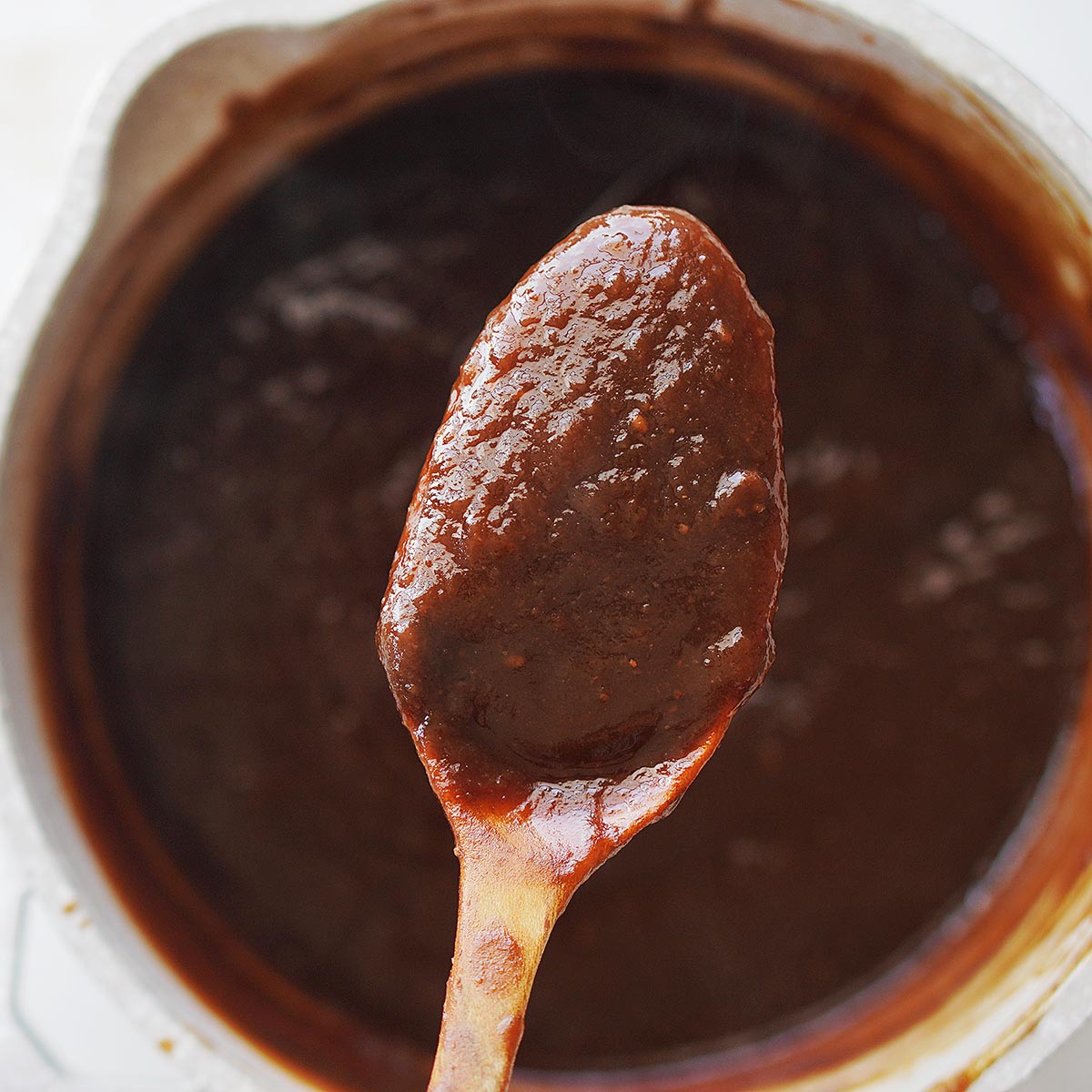

How to Store
- Fridge: Store in glass jars with an airtight lid in refrigerator. Keeps for about 60 days in fridge and up to 6 months in freezer.
FAQs
It’s a flavor explosion! 🌟 A mix of sweet and sour flavor with a hint of tanginess.
Dates has a natural sweetness that can be similar to a tamarind. If you combine it with prunes to bring out some of the tangy taste, it will be perfect!
Definitely! Here are just a few of the benefits: It’s a great source of essential vitamins and minerals. It’s packed with vitamin C & B. It also contains minerals like iron, potassium, magnesium, and calcium, which are essential for keeping your bones strong and your muscles happy.
Tamarind contains compounds like tartaric acid, which has antioxidant properties.
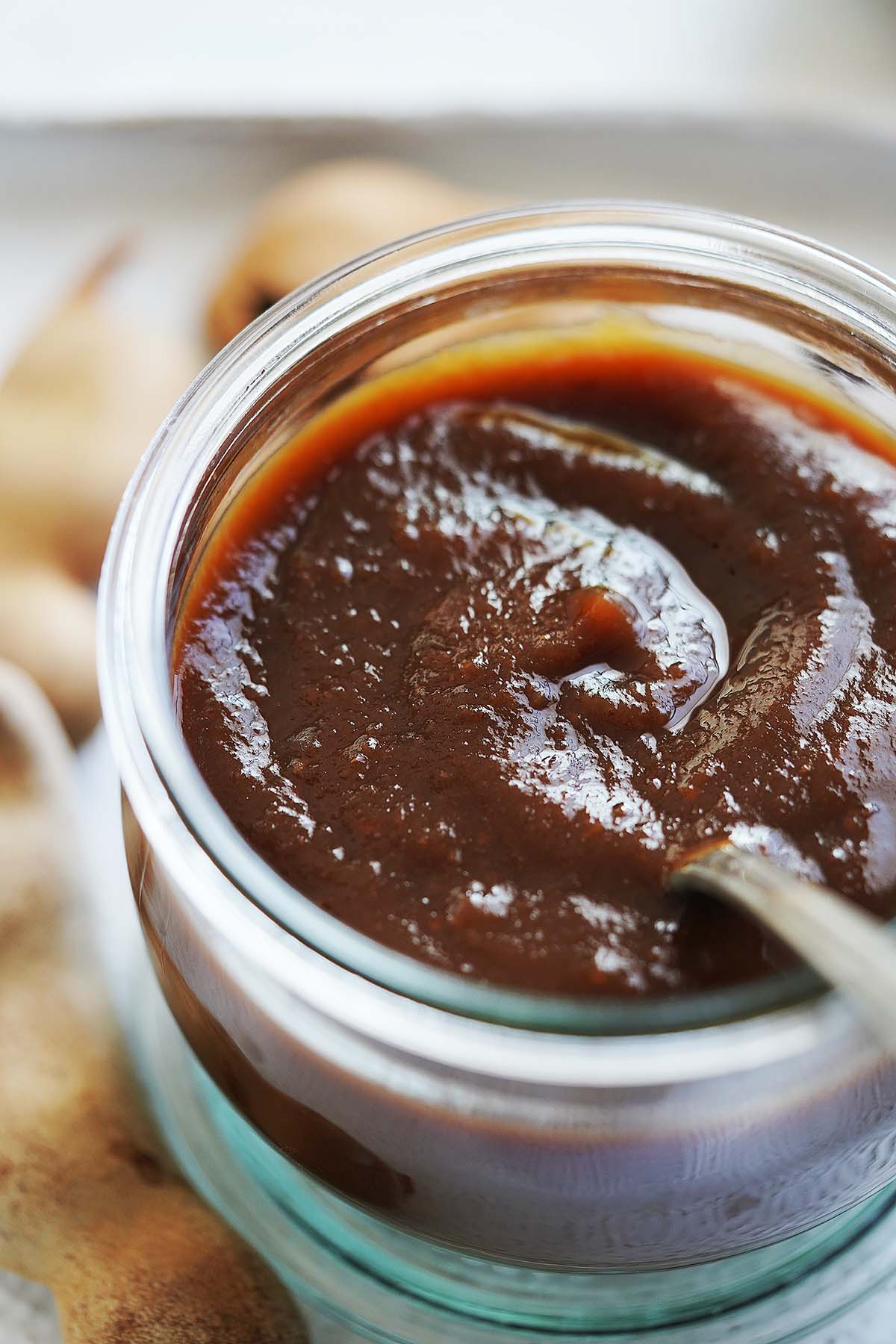

More Condiments To Try:
Try any of my delicious sauces, dips & dressings…. Always easy & delicious!
I hope you like this recipe! Share it, or leave a rating and comment below. For questions that need an answer right away, please contact me and I’ll get back to you asap. Gracias!!!! xx, Ana
Print Recipe:
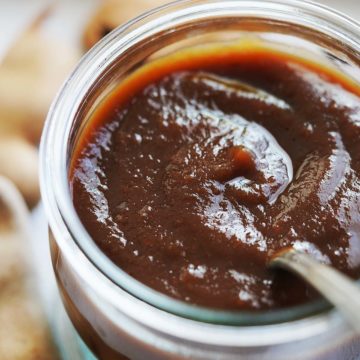
How To Make Tamarind Paste
Ingredients
- 10 to 12 large fresh tamarind pods
- 3 cups water
Instructions
- Remove the skin from tamarinds along with any big strings attached to the fruit. Cut each tamarind into several pieces with your hands
- Rinse quickly on a colander with cold water to remove any dusty spots.
- Place in a medium bowl and add 2 cups of hot water. Cover with a lid or a plate and let it rest for 10 minutes.
- In another medium bowl, place a strainer and add the tamarinds with the cooked water. Mash it with a spatula or your clean hands to squeeze the juice/pulp out of the seeds and the hard fiber. Push down the pulp thru the strainer to extract all of the tamarind pulp.
- Add a little more water at the time (no more than 1 cup water) to strain any remaining pulp. Scrape off any pulp attached to the outside/bottom of the strainer. Discard the tamarind fiber and seeds.
- In a medium sauce pan, add the tamarind pulp from the bowl.
- Bring to a soft boil and then lower heat to medium low. Cook for 5 minutes.
- Remove from heat and let it cool down completely.
- Store in glass jars with an airtight lid in refrigerator. Keeps for 1 month in fridge and up to 6 months in freezer.
Add Your Own Private Notes
Whenever you come back to this recipe, you’ll be able to see your notes.
Nutrition
The nutritional information and US conversions are calculated automatically. I cannot guarantee the accuracy of this data. If this is important to you, please verify with your favourite nutrition calculator and/or unit conversion tool.

Love this recipe so much! I make a lot of tamarind paste so I’m at it for hours trying to squeeze out as much tamarind pulp as I can. Definitely worth the effort though! Makes my agua de tamrindo turn out so delicious.
Why have I been buying tamarind paste all these years when it is so simple and easy to make? Thank you for the recipe!
Yes Renee, and also with no extra ingredients that you do not know when buying at stores. Thank you!
Not only was this fun to make but it’s absolutely delicious! Thanks so much for sharing!
Thank you, Holley!! so happy that you like it.
I always really like it when I can find recipes for my favorite condiments that I can make at home. This tamarind paste was simple to make and a great addition topping to have on hand.
Thank you Sharon! yes you can have it on hand when you have a spicy craving.
This is fantastic! There are so many things you can do with this!
Thank you Justine, yes, you can use it with vegetables, fruits, potato chips, drinks, micheladas!!
How many tamarinds to two cups?
So good! I didn’t know how to make this and it’s so easy! Did take a little time but no problem
Que Rico Ana!!! Gracias
This turned out amazing! I made Agua Fresca De Tamarindo with this pulp. Loved it!